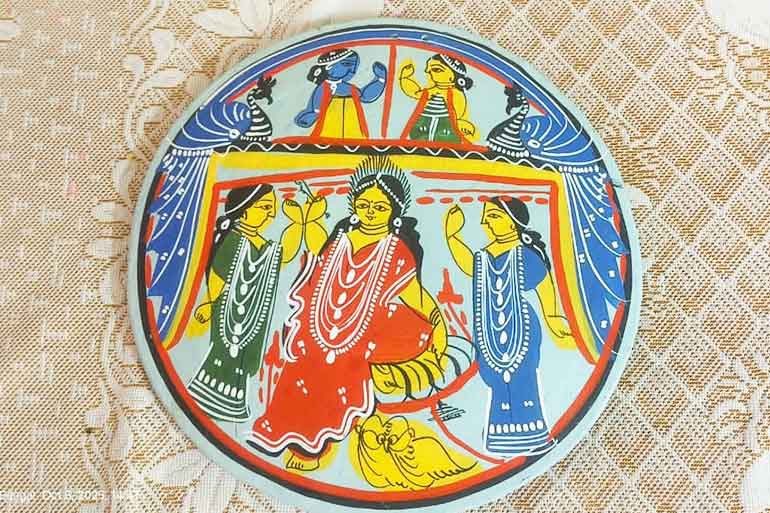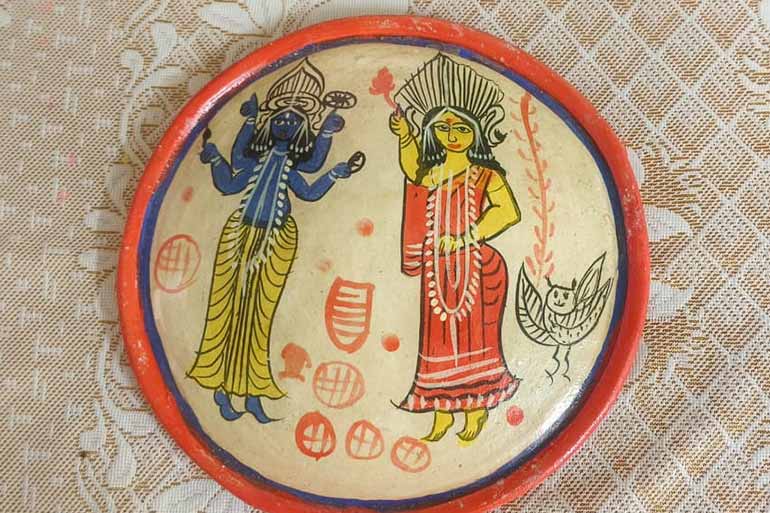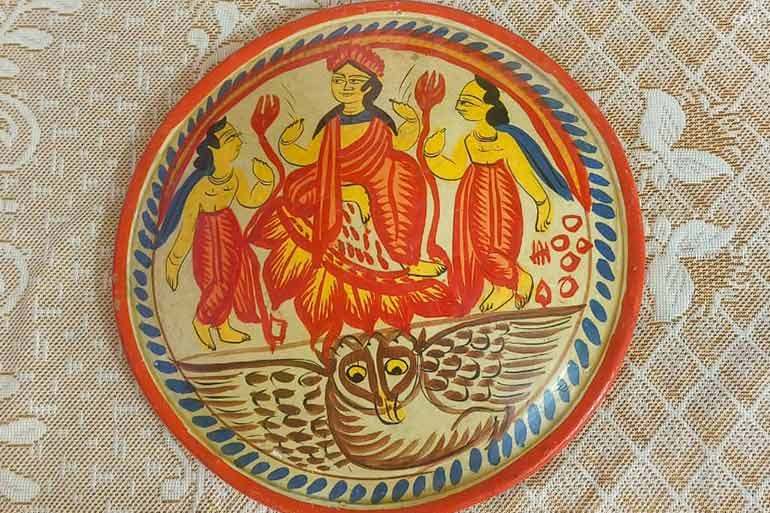Lakshmi in the Shora: Preserving Bengal’s Folk Art and Ancestral Beliefs - GetBengal Story

In Kailash, Lakshmi is believed to be the beloved daughter of the ever-poor Lord Shiva; if Lakshmi is not present, then a household cannot be reconciled as use have to happen when the son and daughter have to sit together with Lord Shiva. Shiva gets mad when Parvati goes home after four days of celebration and ritual. To control Shiva’s madness, on the tenth day, she waits for her daughter Lakshmi, and sits under a tree. This is when she comes into the house holding the daughter's hem; this is also believed to be something we should follow and is a cultural practice of eastern Bengal following Durga Visarjan.

Shora is a traditional two-dimensional clay container used to store grains. In rural Bengal, soil and crops are sacred, and Lakshmi, representing prosperity, is symbolically kept in these containers. This belief led the Rudrapal community in Faridpur, Dhaka, and Jessore to develop Shora painting—decorating sun-dried, baked clay containers with images of Durga and Lakshmi.
During Kojagari Purnima, these painted Shoras are worshipped. Scriptures also mention Shora worship, representing masculine energy, with depictions of goddesses on them. After Partition, many from eastern Bengal continued this tradition in West Bengal, in areas like Taherpur, Panihati, Naihati, and Dattapukur. Each region has distinctive Shora designs, colors, and construction techniques.

Though demand for Shoras has declined, their ritual importance remains. As artist Sushanta Pal says, Lakshmi embodies the connection between ancestral beliefs and household welfare. Early Shora paintings used black, blue, and yellow to depict human-shaped dolls symbolizing happy family life. After Durga Puja, people in Bengal buy Shoras for Lakshmi worship, keeping alive folk traditions and beliefs.
Note:
Translated by Krishnendu Mitra
To read the original Bengali article, click here.










